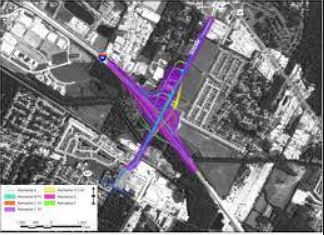
On Tuesday, officials with the Louisiana Department of Transportation and Development (DOTD) joined other state and local officials to break ground on Phase III of the I-10/Pecue Lane Interchange Project in Baton Rouge.
The project, which began in 2017, is an important part of the area’s economic growth, said Transportation Secretary Shawn D. Wilson.
“Baton Rouge is seeing tremendous growth, which is why this project is crucial to this region, as it will help alleviate much of the traffic on the surrounding surface streets as well as on the interstate,” Wilson said. “Due to the unprecedented amount of federal funding Louisiana has received, we are making great progress across the state, and I look forward to seeing many more shovel-ready projects advance.”
This most recent phase of the project will widen Pecue Lane from 2 to 4 lanes, reconstruct the KCS railroad crossing, construct pedestrian sidewalks, replace the Ward Creek Bridge, extend Rieger Road to intersect with Pecue Lane, construct on and off ramps to I-10 and open the diverging diamond interchange to traffic.
“This important project will provide additional access to Interstate 10 between Siegen and Highland roads. It will also provide direct access from the interstate to Woman’s Hospital. This will be the first diverging diamond interchange in East Baton Rouge Parish and an important partnership with the MOVEBR Program,” said Baton Rouge Mayor-President Sharon Weston Broome.
The project was stalled last year after bids for the final phase of construction came in at $69 million – $14 million higher than expected.
“The start of construction on this long-awaited project signifies great progress on the infrastructure system in the Capitol Region,” said state Sen. Franklin Foil (R-16). “This new interchange and interstate exit will greatly benefit the community and motorists who travel through the Baton Rouge region. I want to thank the Department of Transportation and Development and all of our local partners for working together to advance this project. This is another example of what can be accomplished when state and local partners work together.”
Construction on the project is expected to be completed in 2026.